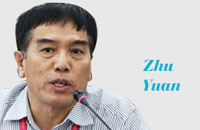Beijing’s subsidy model for transportation isn’t sustainable
By Li Yang (chinadaily.com.cn) Updated: 2014-07-08 09:29The Beijing government should play up the market’s role in adjusting the prices of its State-run public transportation system to make its operation sustainable and serve the people better, says an article of China Business News. Excerpts:
The Beijing government is seeking advice on the price reform of the public transportation system in the city. Although the authority does not say the price will necessarily rise, it is increasingly a consensus that a price rise is beyond question, and the only question is how big the rise should be.
From 2007 to 2013, the annual revenue of Beijing’s rail transit rose from 1.2 billion yuan ($200 million) to 3.2 billion yuan, while the operation expenditure increased from 1.3 billion yuan to 6.7 billion yuan.
It costs 2 yuan to take the subway and 0.4 yuan to take most buses in Beijing. Last year, the Beijing government subsidized its buses with 15 billion yuan.
In 2013, the city government’s revenue is about 300 billion yuan. Its expenditures in building new lines for rail transit and subsidies for deficits in public transportation amounted to 100 billion yuan.
Such a subsidy model is non-sustainable. Shanghai and Beijing have similar populations. But Beijing’s urban area is now 2.5 times that of Shanghai. Beijing has 465 kilometers of rails, which carry more than 3 billion passenger trips each year, compared with Shanghai’s 567 km and 2 billion passenger trips.
That a subway passenger in Shanghai pays differently according to the distance he or she travels make its rail transit system more economically independent from the government subsidy.
Beijing should learn from Shanghai’s model. The government should recalculate its balance and let the price reflect the supply-demand relations more objectively.
Meanwhile, the State-run public transportation firms must improve their services after raising the prices.
And the Beijing government must reflect on the irrelevancies among its industrial development strategies, city planning and population policies, which is one root cause for serious traffic congestion in the city.











